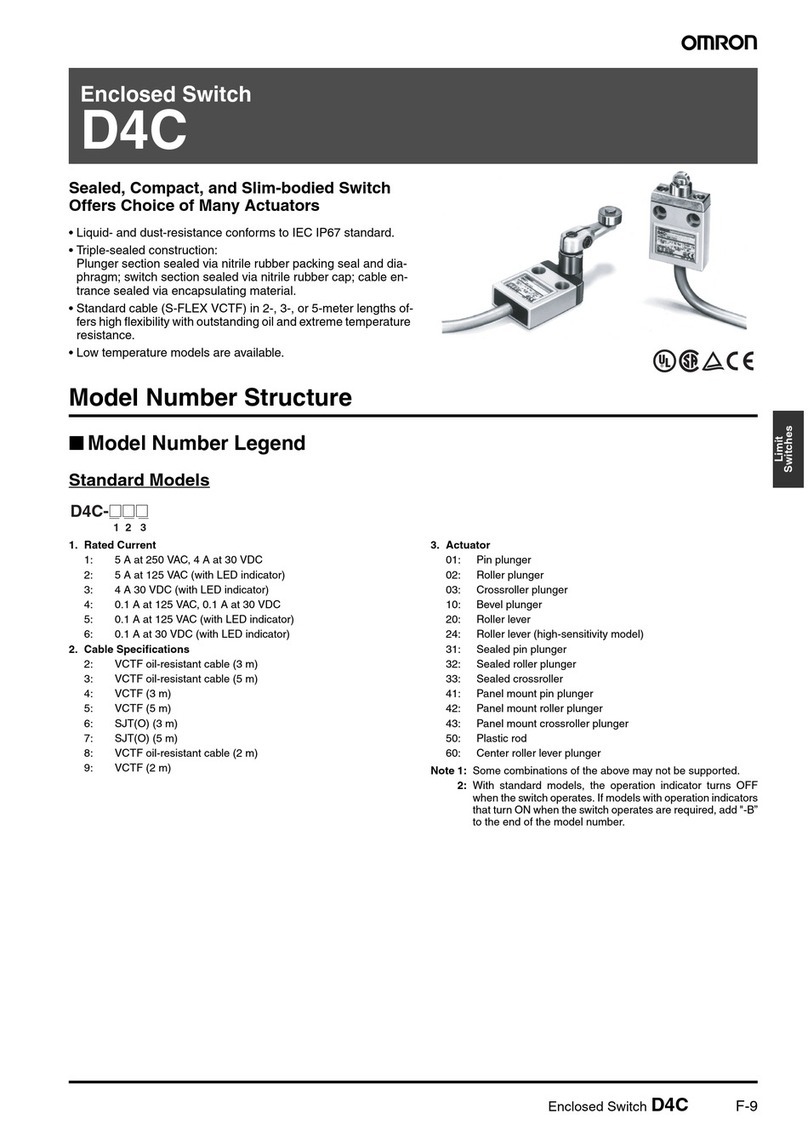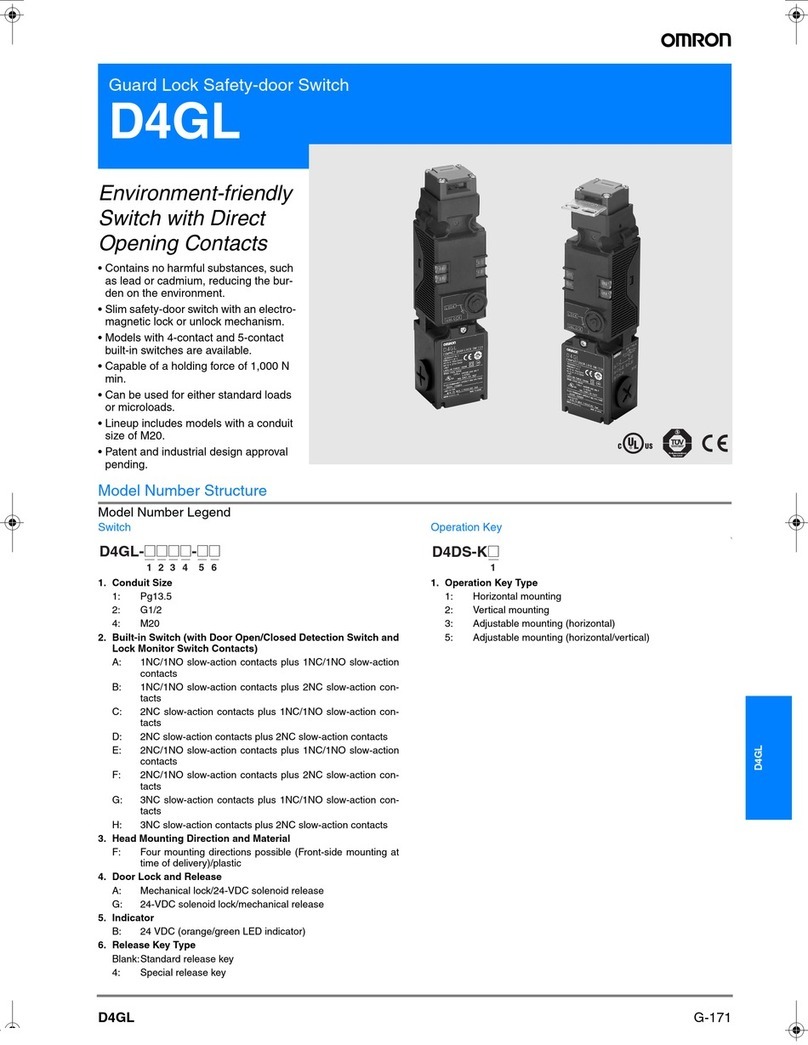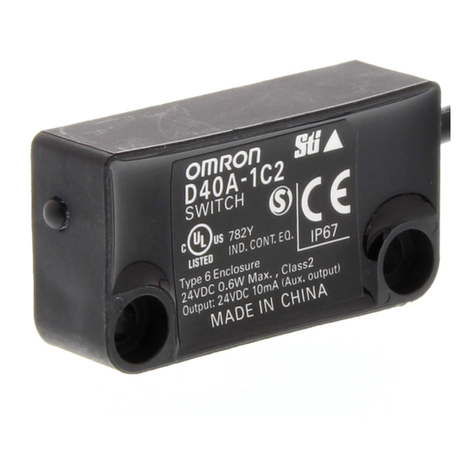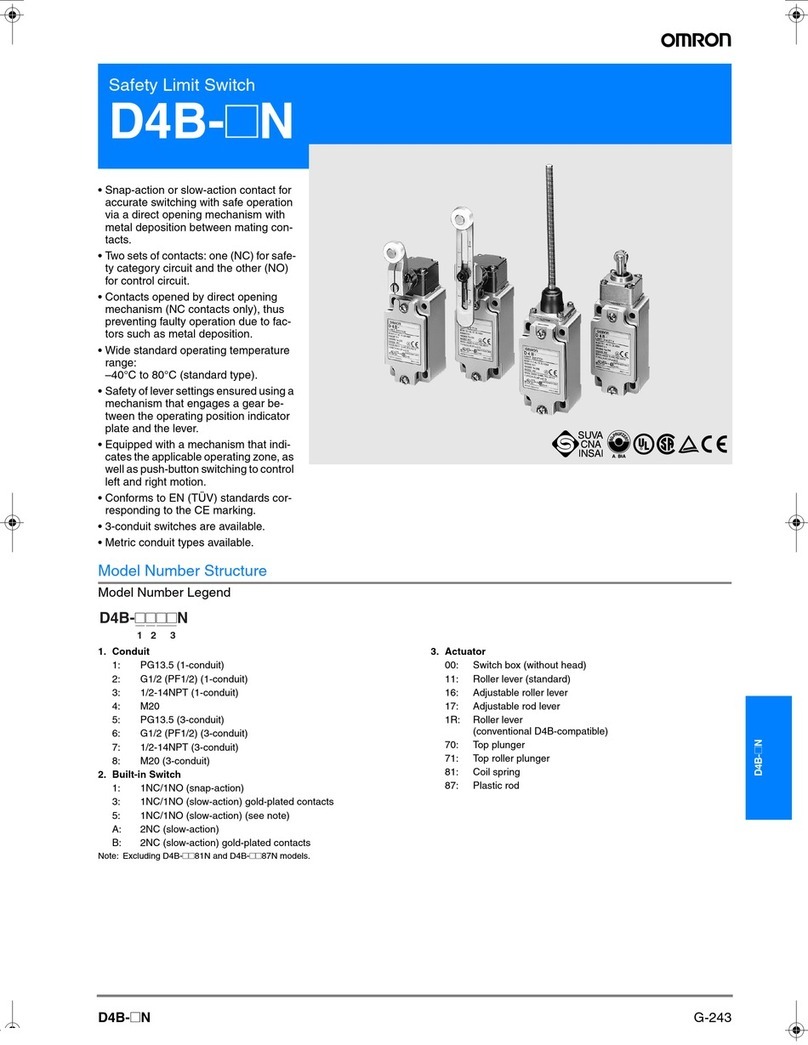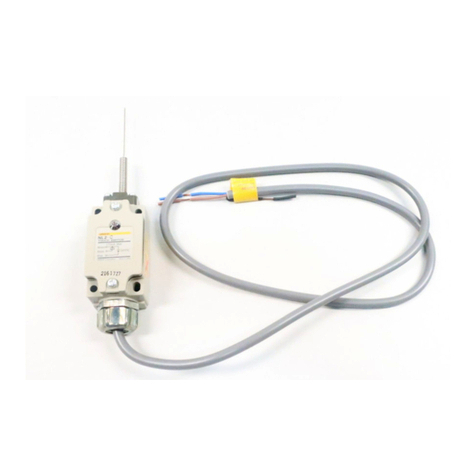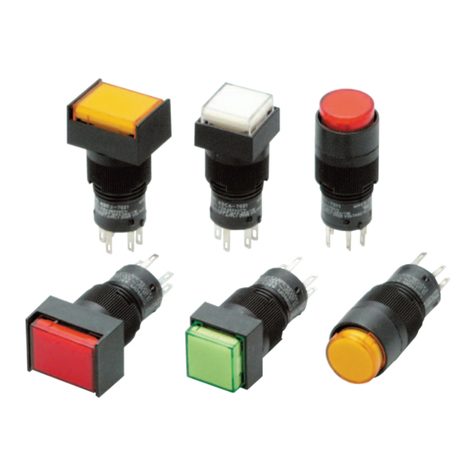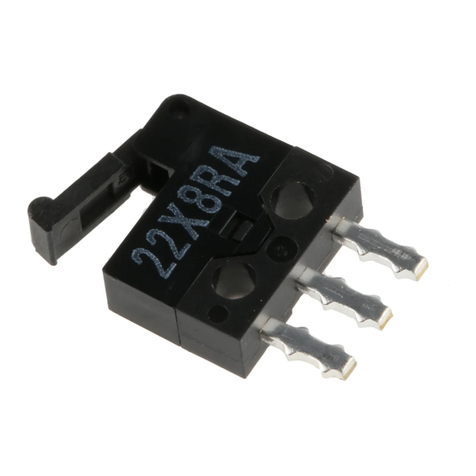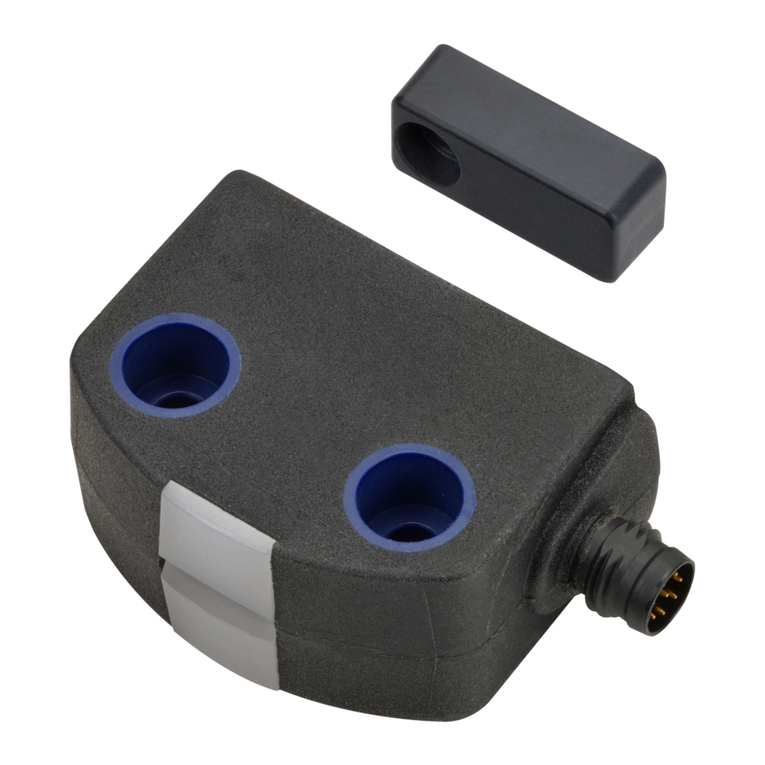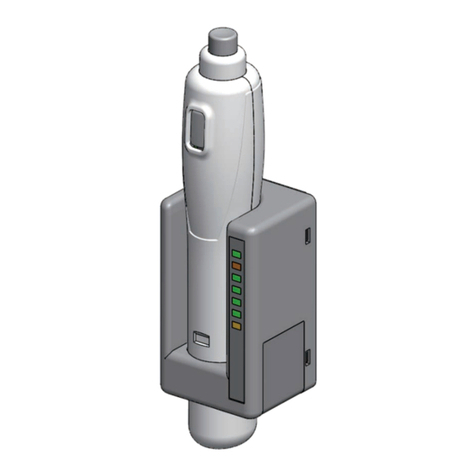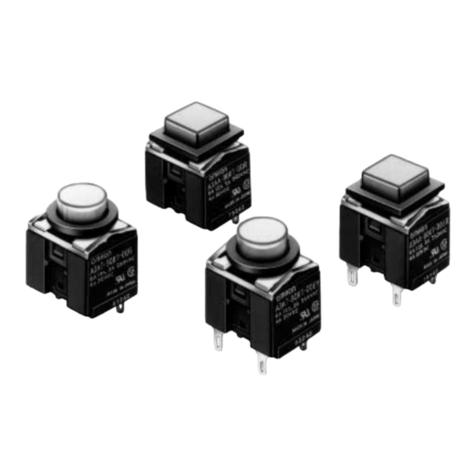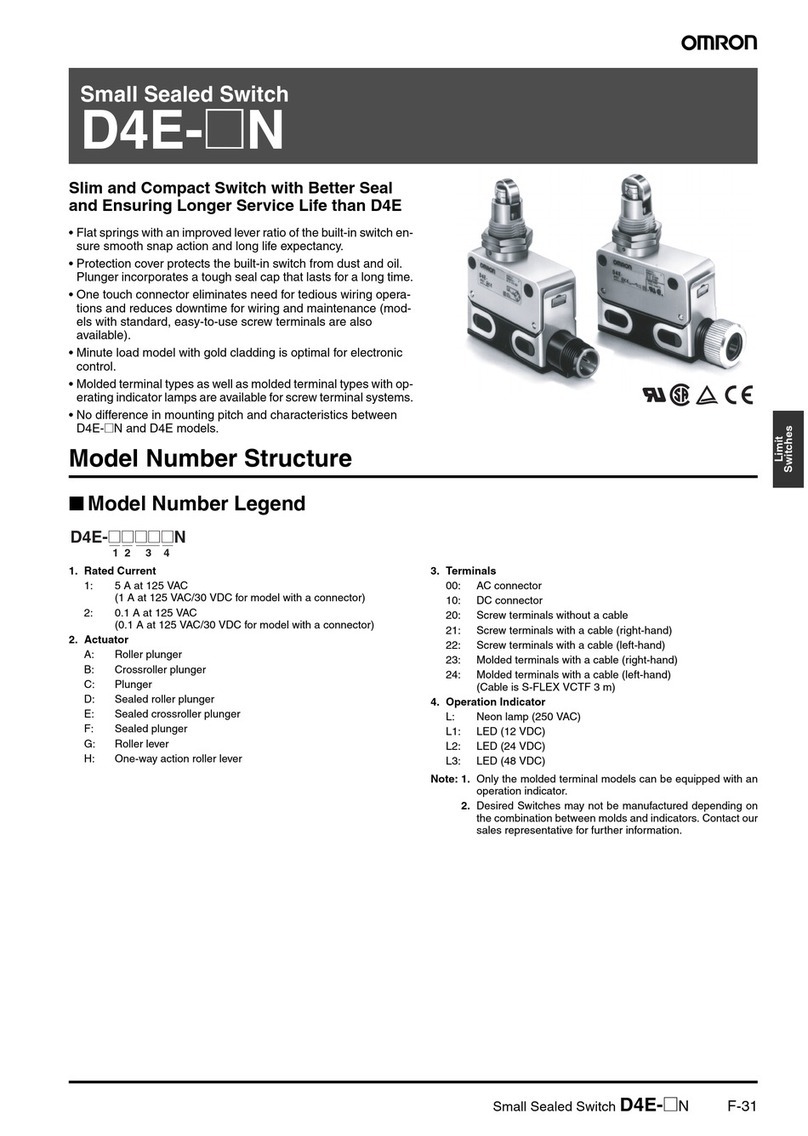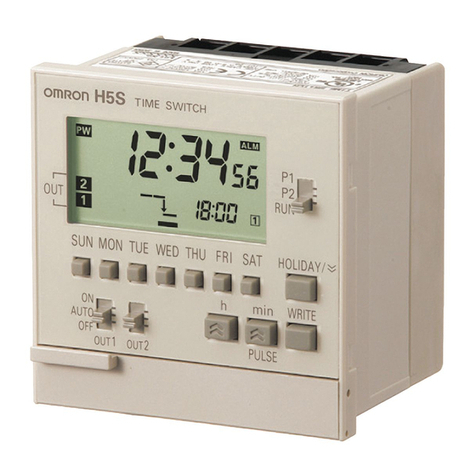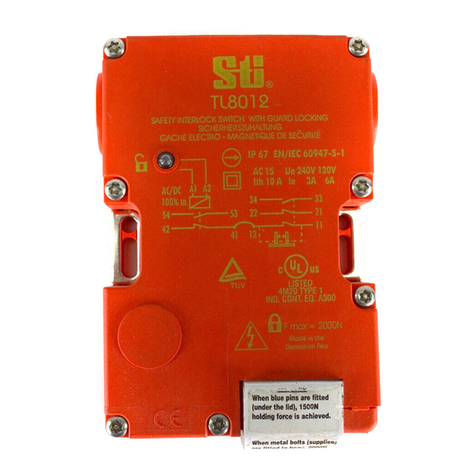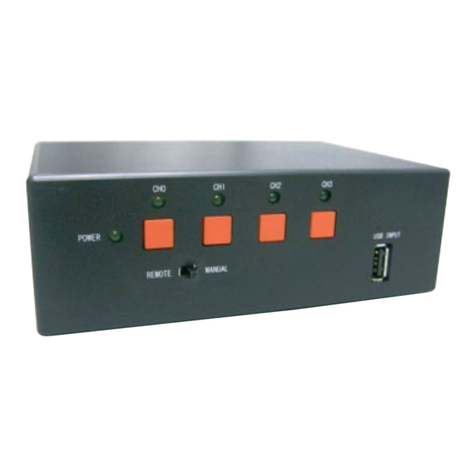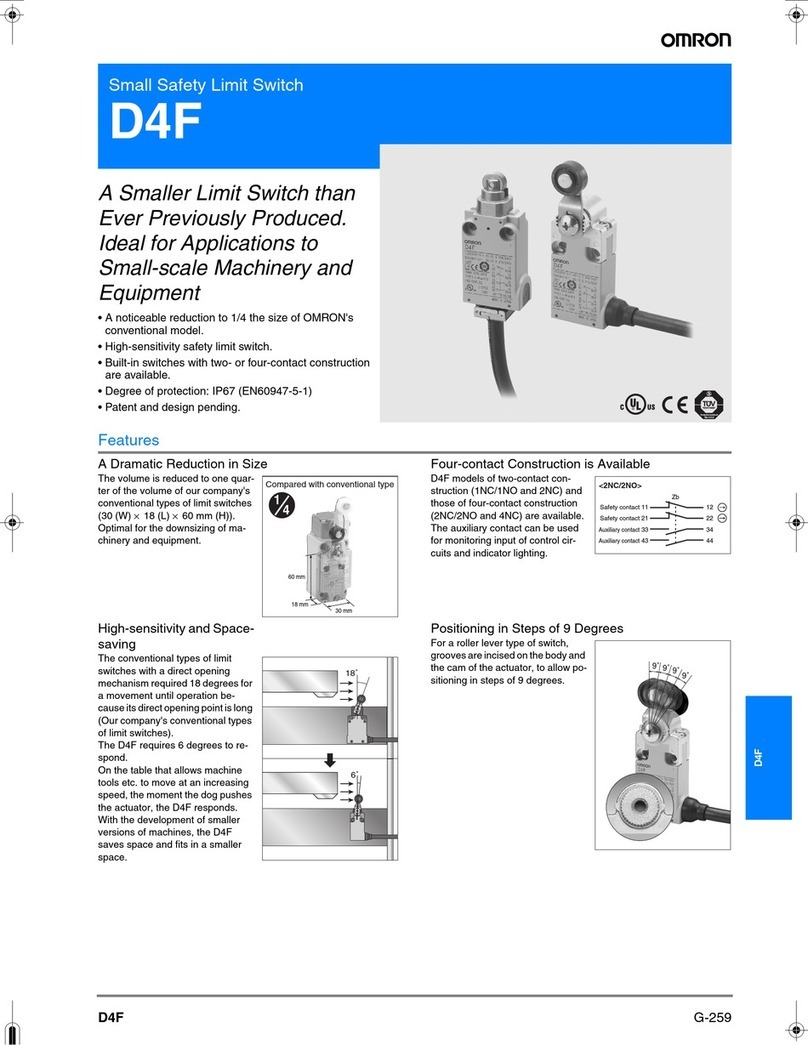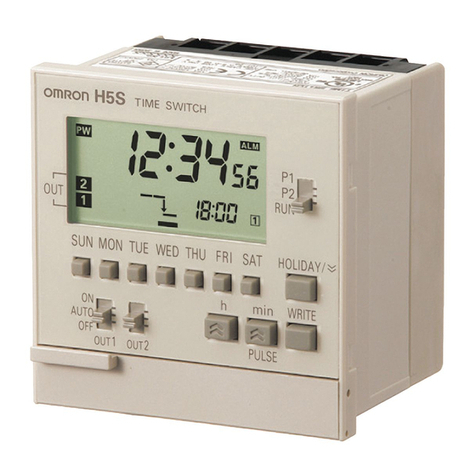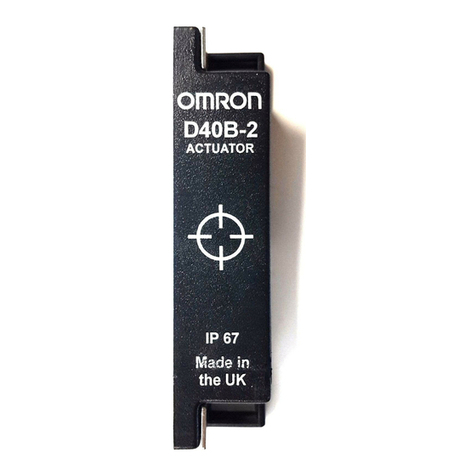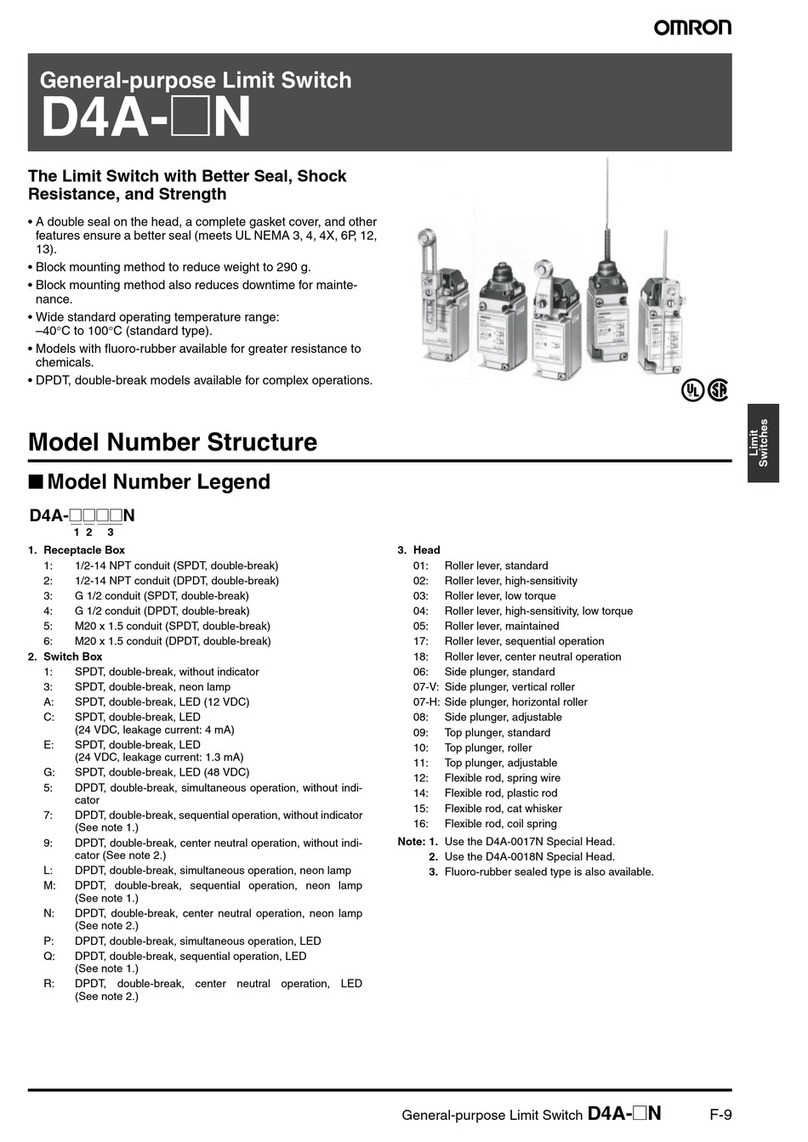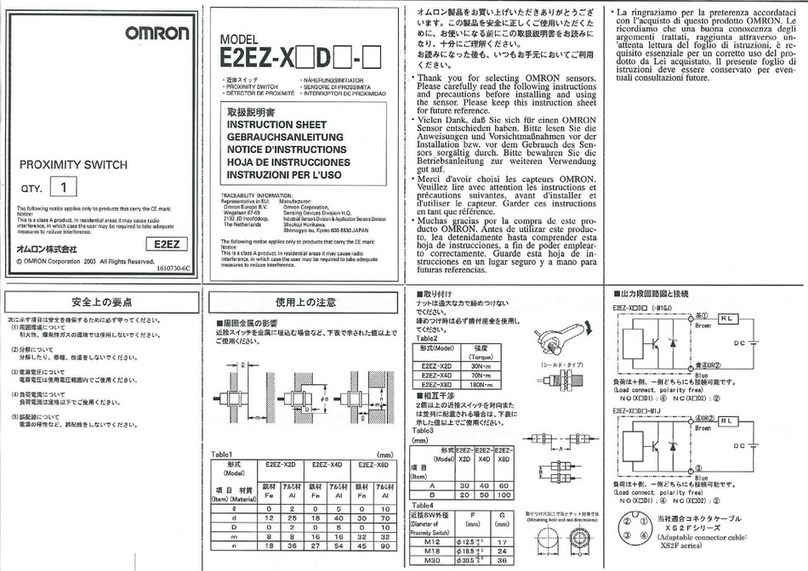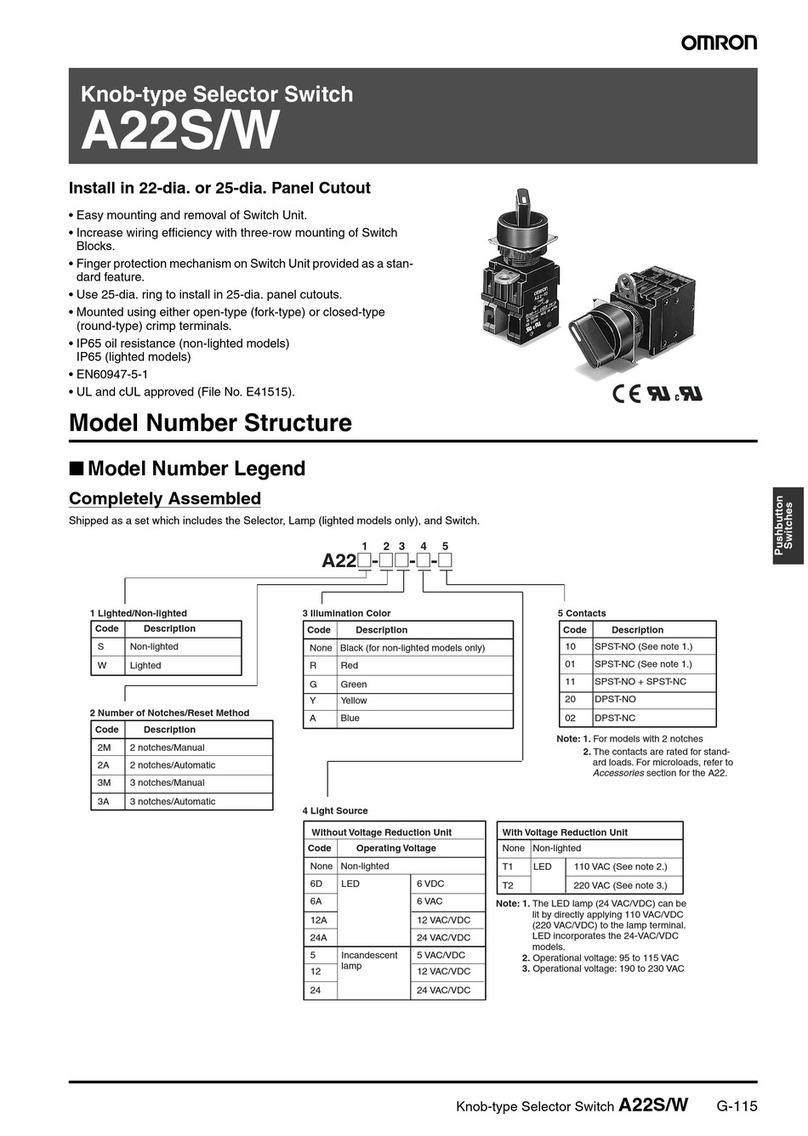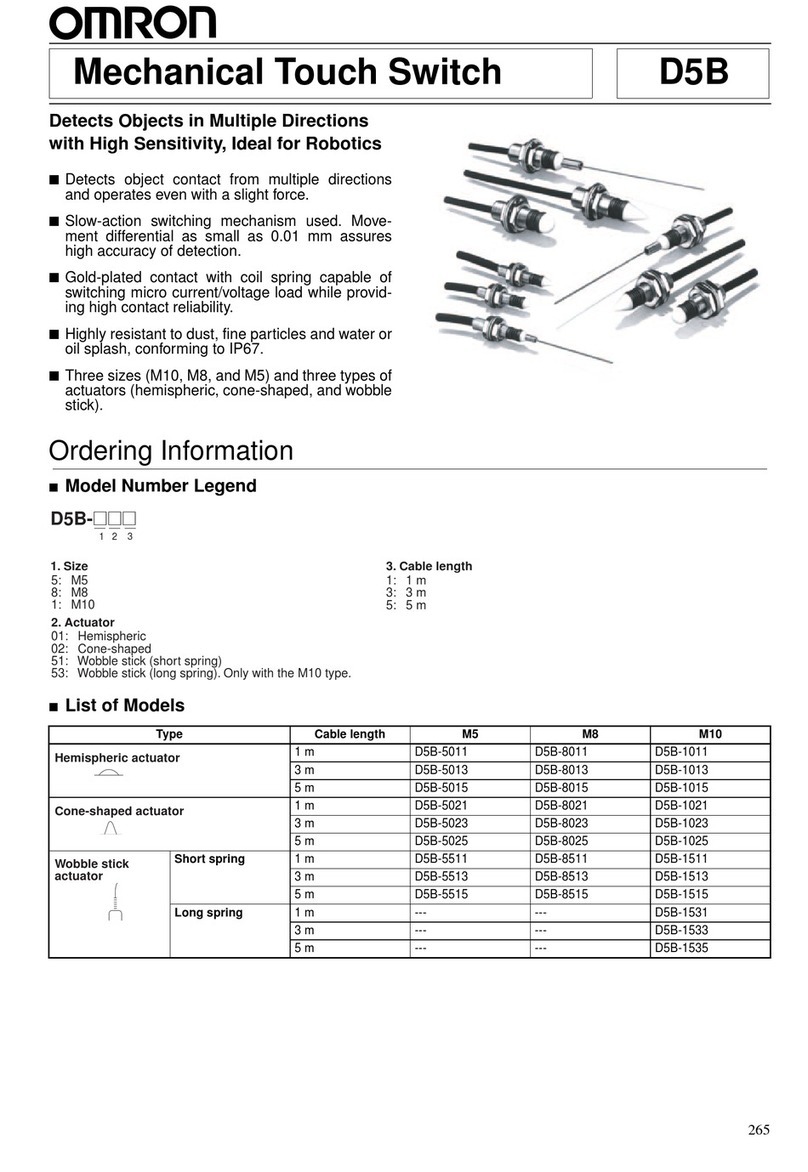
Guard Lock Safety-door Switch D4JL
Safety Door
Switches
Precautions for
All Safety Door
Switches D4NS D4GS-N D4BS D4GL D4JL D4NL D4BL D4NH D40B D4NS-SK01
D4NS-SK30
D4JL-SK30
56
Specifications
■Standards and EC Directives
Conforms to the following EC
Directives
•Machinery Directive
•Low Voltage Directive
•EN 1088
•EN 60204-1
•GS-ET-19
•CCC (Application scheduled)
Certified Standards
Note: CSA C22.2 No. 14 was certified by UL.
■Certified Standard Ratings
TÜV (EN 60947-5-1)
Note: Use a 10-A fuse type gIor gGthat conforms to IEC 60269 as a
short-circuit protection device. This fuse is not built into the
Switch.
UL/CSA (UL 508, CSA C22.2 No. 14)
A300
Solenoid Coil Characteristics
Indicator Characteristics
■Characteristics
Note: 1. The above values are initial values.
2. Thedegreeofprotectionistestedusingthemethodspecifiedby
the standard (EN 60947-5-1). Confirm that sealing properties
are sufficient for the operating conditions and environment
beforehand. Although the switch box is protected from dust or
water penetration, do not use the D4JL in places where foreign
material may enter through the key hole on the head, otherwise
Switch damage or malfunctioning may occur.
3. The durability isfor an ambient temperature of 5 to 35°C and an
ambient humidity of 40% to 70%. For further conditions, consult
your OMRON sales representative.
4. Do not pass a 3-A, 250-VAC load through more than two
circuits.
5. These figures are minimum requirements for safe operation.
6. This figure is based on the GS-ET-19 evaluation method.
7. This value will vary with the switching frequency, environment,
and reliability level. Confirm that correct operation is possible
with the actual load beforehand.
8. Use a 10-A fuse type gIor gGthat conforms to IEC 60269 as a
short-circuit protection device.
Certification
body Standard File No.
TÜV Product
Service EN 60947-5-1
(certified direct opening) Consult your OMRON
representative for
details.
UL (See note.) UL 508, CSA C22.2 No.14
CQC (CCC) GB14048.5 Application scheduled
Item Utilization
category AC-15 DC-13
Rated operating current
(Ie) 3 A 0.27 A
Rated operating voltage
(Ue) 240 V 250 V
Rated
voltage Carry
current Current (A) Volt-amperes (VA)
Make Break Make Break
120 VAC 10 A 60 6 7,200 720
240 VAC 30 3
Item Type 24 VDC
Rated operating voltage
(100% ED) 24 VDC
Current consumption Approx. 200 mA
Insulation Class F (130°C max.)
Item Type LED
Rated voltage 24 VDC 24 VDC
Current consumption Approx. 1 mA Approx. 8 mA
Color (LED) Orange Green
+
−15%
Degree of protection
(See note 2.) IP67 (EN 60947-5-1)
(This applies for the Switch only. The degree
of protection for the key hole is IP00.)
Durability
(See note
3.)
Mechanical 1,000,000 operations min. (trapped key:
10,000 operations min., rear release button:
3,000 operations min.)
Electrical 500,000 operations min. for a resistive load
of 3 A at 250 VAC (See note 4.)
Operating speed 0.05 to 0.5 m/s
Operating frequency 30 operations/minute max.
Rated frequency 50/60 Hz
Direct opening force
(See note 5.) 60 N min. (EN 60947-5-1)
Direct opening travel
(See note 5.) 15 mm min. (EN 60947-5-1)
Holding force
(See note 6.) 3,000 N min.
Insulation resistance 100 MΩmin. (at 500 VDC)
Minimum applicable
load (See note 7.) Resistive load of 1 mA at 5 VDC (N-level
reference value)
Rated insulation voltage
(Ui)300 V (EN 60947-5-1)
Rated open thermal
current (Ith)10 A between terminals 12 and 41, 3 A
between all other terminals (EN 60947-5-1)
Impulse withstand
voltage
(EN 60947-5-1)
Between terminals of same polarity 2.5kV
Between terminals of different
polarity 4 kV
Between other terminals and
uncharged metallic parts 6 kV
Conditional short-circuit
current 100 A (EN 60947-5-1) (See note 8.)
Pollution degree
(operating environment) 3 (EN 60947-5-1)
Protection against
electric shock Class II (double insulation)
Contact resistance
(initial value) 25 mΩmax. per contact
Vibration
resistance Malfunction 10 to 55 Hz, 0.75-mm single amplitude
Shock
resistance Destruction 1,000 m/s2min.
Malfunction 80 m/s2min.
Ambient operating
temperature −10 to +55°C (with no icing)
Ambient operating
humidity 95% max.
Weight Approx. 650g
